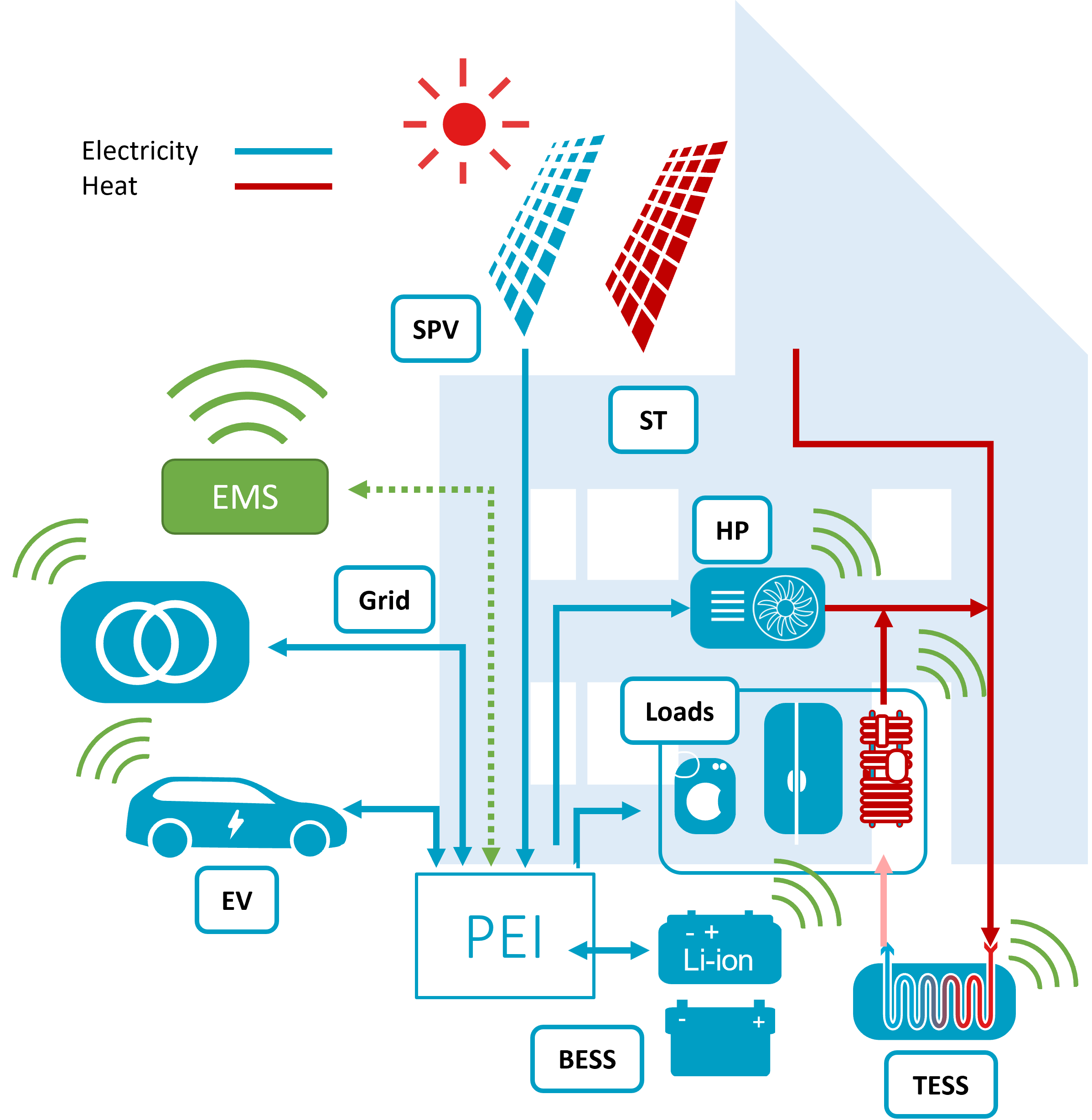Aging Aware Energy Management in Multicarrier Integrated Systems

Project description
In order to move towards a more sustainable energy system, the inclusion of renewable power sources in the residential sector appears as an attractive alternative. Providing technical and economic benefits to the grids (power, heat & transport) and the individual.
The net-zero household proposed by the FLEXINET project uses several energy vectors to integrate the mobility, electricity, and heat sector. The electrification of the mobility and heating sectors is key to achieving net-zero targets, energy security, and resilience.
Given the intermittency and variability of the Distributed Energy Resources (DER) integrated into the household, their management and operation are crucial. The DER used in the building is Solar PV panels (SPV), Electric Vehicles (EV), stationary hybrid energy storage systems (HESS) with different technologies, heat pipes, heat pumps, and thermal storage system (TESS). The joint use of the different energy vectors in harmony is what unlocks their decarbonising and societal potential. If done wrong, the system will fail to fulfil its primary goal. The coordination and operation of the multi-carrier systems are done by the Energy Management System (EMS) through suitable algorithms.
In this context, the different DERs have the following roles:
-
Sources: SPV, heat pipes and boilers.
-
Sinks: the electrical appliances and the radiators, with the special mention of the heat pump which links the heat and electric networks.
-
Storage: electrical storage with Li-ion, Sea-Salt batteries, EV and thermal storage.
It is worth mentioning that the different electric ESS technologies are limited by their ageing (LIBs, SSBs and EVs) as well as by their availability for mobility (EVs). The combination of different ESS is a powerful tool for securing the energy supply in a safe, cost-effective and reliable manner. This would not be possible without their capabilities for delivering and receiving energy along the different time frames (seconds, minutes, hours, and days).
Another critical component of this system is the power electronic converter, which enables the complete controllability of every household asset and provides a flexible interface with the distribution system operator (DSO) and their grid.
Thus, it is necessary to integrate all the components with a single approach that accounts for DER uncertainty and variability, aging of the assets, and user comfort. Moreover, the system might also incorporate information from user behavior to maximize the available power and energy. Thus, the system’s overall performance will maximize the technical performance and the end-user’s comfort. Ensuring maximum performance when required by the user or the grid. All of this is achieved by the EMS.
This integrated control can be achieved using a three-layer architecture with a device-level control (primary), a local system control (secondary), and a remote-based computationally intensive optimization control (tertiary). The primary controllers oversee measurement, state estimation (charge, health, and power), stability and protection. The secondary controller (EMS) is divided in a local and a remote implementation. The local EMS is not based on optimal control, advanced forecasting, or learning. The remote secondary controller is a heavy-computational server-based application that ensures optimal performance, taking into account uncertainties, previous use, degradation mechanisms, and the rest of the available measurements/estimations of the primary controllers.
This Ph.D. project aims to develop such advanced algorithms, which will constitute the tertiary control, a crucial piece in the jigsaw of the energy transition at the household level.
PhD candidate
Dario Slaifstein: d.a.slaifstein@tudelft.nl
Supervisors:
Gautham Ram Chandra Mouli: g.r.chandramouli@tudelft.nl
Laura Ramirez Elizondo: l.m.ramirezelizondo@tudelft.nl
Promotor:
Pavol Bauer: p.bauer@tudelft.nl